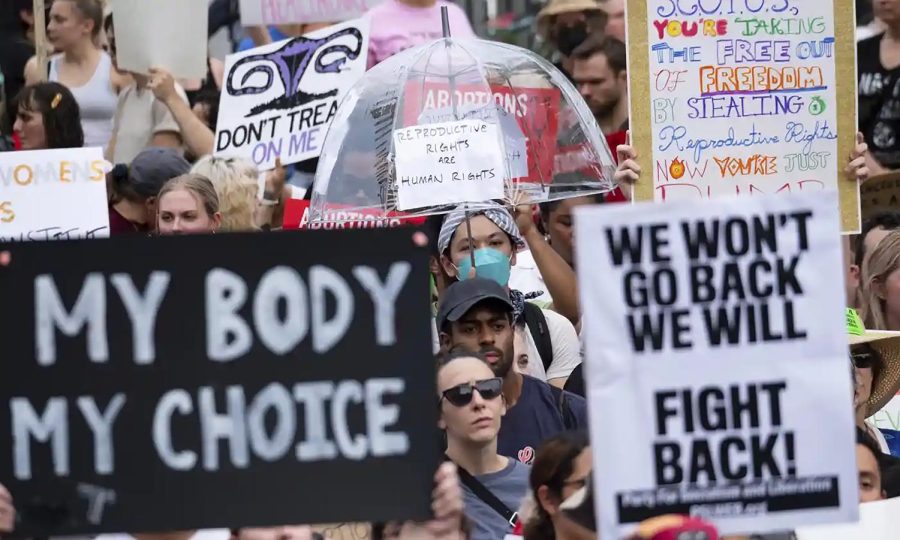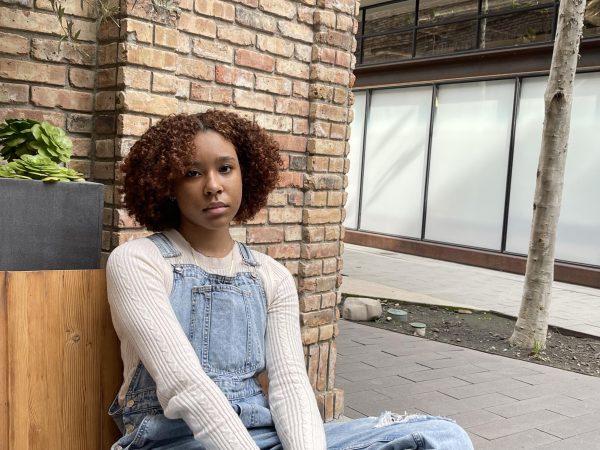Where abortion stands after the U.S. post-midterm elections
December 8, 2022
Following the U.S. Supreme Court’s decision to overturn the landmark case Roe v. Wade, voters took to the midterm election polls conscious that the legality of a uterus owners’ reproductive freedom is now in the hands of the states. Even with a smaller pool of voters this election compared to previous years, the U.S. remains in an era of high voter turnout with millions voting and an especially high youth turnout at campus polling sites.
Background on Roe v. Wade and Planned Parenthood of Southeastern Pennsylvania v. Casey
In 1973, the U.S. Supreme Court heard the case between “Jane Roe” and Dallas county, Texas District attorney Henry Wade. In a 7-2 opinion the Court acknowledged the harms of state involvement in personal liberty by imposing on choice including health and economic status in risk of continuing a pregnancy. The ruling in Roe v. Wade struck down Texas’s criminal ban on abortion and recognized the right to privacy freeing individuals from governmental interference and a fundamental right, guaranteeing the liberty of the Fourteenth Amendment.
In the 1992 case of Planned Parenthood of Southeastern Pennsylvania v. Casey, the U.S. Supreme Court struck down the “husband notification” standard that had recognized their interest in the pregnancy and fetus, which once required the permission of the husband in the decision on terminating a pregnancy. The 5-4 decision in Planned Parenthood v. Casey also adopted the “undue burden” standard which upheld a mandatory 24-hour waiting period and counseling by physicians. The Center For Reproductive Rights explains that the Court’s adoption of the undue burden standard has long impacted the restrictions “that make abortion unavailable to some women.”
Post Roe
In June 2022, the Supreme Court abandoned nearly 50 years of precedent that Roe v. Wade upheld. The leaked draft opinion, published and released in May 2022 by Politico, shocked the nation, sparking state-wide protests. The Supreme Court ruled in a 6-3 decision in Dobbs v. Jackson Women’s Health Organization upholding Mississippi’s ban on abortion at just 15 weeks of pregnancy, ending the constitutional right to abortion in the United States. The ruling in turn overruled both Roe v. Wade and Planned Parenthood v. Casey.
Abortion status following the 2022 midterms
Following the results of the 2022 midterm election abortion is legal in 25 states and restricted in 25 states, The New York Times reports the status of abortion to be banned in 13 states, Alabama, Arkansas, Idaho, Kentucky, Louisiana, Mississippi, Missouri, Oklahoma, South Dakota, Tennessee, Texas, West Virginia and Wisconsin.
Abortion bans in Alabama, Arkansas, Kentucky, Louisiana, Missouri, South Dakota, Tennessee, Texas and West Virginia have no exceptions for rape or incest. Georgia joins the list of what The Center for Reproductive Rights considered to be hostile to abortion as the Georgia Supreme Court reinstated the ban on abortions after six weeks of pregnancy.
In September 2022, Arizona banned abortion after 15 weeks of pregnancy, but was unable to enforce a ban with no exceptions for rape or incest due to an appeals court block.
In Florida, abortion is banned after 15 weeks of pregnancy and with a Republican supermajority, there is a possibility of further restrictions on abortion.
Utah has enforced an 18-week ban with a judge blocking the state’s restrictive trigger bans on most abortions.
In North Carolina, abortion is banned at 20 weeks of pregnancy but even with a governor in support of abortion rights, North Carolina lawmakers continue to prohibit abortion access says the Center for Reproductive Rights.
In Indiana, Iowa and North Dakota, there is a 22-week ban with each state attempting to be more restrictive. Bans are blocked in each state attempting to further restrict abortion access.
A near-total ban is blocked in Michigan and winning the ballot measure ensured the right to abortion.
A 20-week ban was blocked in Montana courts with voters during the midterms rejecting the ballot measure to save “born-alive” infants. Montana Supreme Court has ruled in favor of protecting abortion, making it legal.
Ohio has a six-week ban blocked in court with abortion remaining legal. The New York Times explains with a Republican governor re-elected and Republicans winning all three seats up for election on the Ohio Supreme Court there is a possibility of future abortion restrictions.
South Carolina Supreme Court blocked a ban on abortion after six weeks of pregnancy. Currently, there is a 22-week ban but lawmakers are working on a bill to ban or further restrict abortion.
Wyoming restricts abortion with a judge’s rule to indefinitely block the state’s trigger ban on most abortions.
Abortion is legal but limited in Colorado, Delaware, Kansas, Nebraska, Nevada, New Hampshire, Pennsylvania, Rhode Island, Virginia and Washington DC. This means abortion is not protected under state law. Abortion is legal in Alaska, California, Connecticut, Hawaii, Illinois, Maine, Maryland, Massachusetts, Michigan, Minnesota, New Jersey, New Mexico, New York, Oregon, Vermont and Washington.
Abortion restrictions impact on marginalized communities
The overturning of Roe v. Wade has led to restrictive abortion bans that directly impact pregnant people of color. The CDC acknowledges the racial disparities that exist in healthcare, noting Black women are three times more likely to die from pregnancy-related causes than white women. The Washington Post writes that even with the protection of Roe v. Wade, accessing abortion and other reproductive care for women of color, low-income women and women in rural areas has always been difficult. Reproductive justice activists argue that the mainstream abortion rights movement has a limited focus on abortion, individual rights and gender thus reinforcing the pro-choice rhetoric. Dr. Meghana Nayak, the Chair of Women & Gender Studies expresses, “If you are only talking about abortion and not also about the policing of Black and brown families, medical racism against Black and brown pregnant people and affirming care for queer, trans and disabled people, then you are not yet talking about reproductive justice.” The pro-choice framework seen in mainstream abortion rights movements doesn’t adequately highlight the inequalities and policies that harm women of color’s reproductive freedom and other persons’ reproductive justice.
Reproductive justice is intersectional and Dr. Nayak further explains, “we are hearing more about ‘reproductive justice’ in the wake of the overturning of Roe v Wade, but no one should use that term without crediting U.S. Black feminists who coined this concept to encompass not only the ability to access abortions and the right not to parent, but also to access the right to parent, and the right to parent children in safe and healthy environments.” We must remember and acknowledge the impact public policies will have on the reproductive lives of Black women and women of color.
Join the fight for reproductive justice
We must expand the advocacy framework from abortion rights to reproductive justice. Help fight for not only abortion rights and access but reproductive liberty and freedom. Share your story to reduce stigma, find out your lawmaker’s stance on abortion rights, show up to protest and remain educated on abortion status across the nation.
Donating directly to abortion networks such as the National Network of Abortion Funds, clinics and reproductive justice organizations can be a great way to support the movement. If you or someone you know needs help finding the right clinic you can go to any of these websites: National Abortion Federation, Planned Parenthood, Abortion Clinic Pages, Abortion Care Network and the National Network of Abortion Funds.












